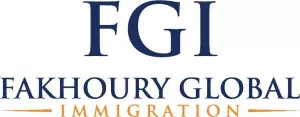- in United States
- within Immigration topic(s)
- with Senior Company Executives, HR and Inhouse Counsel
- in United States
- with readers working within the Retail & Leisure and Law Firm industries
President Trump's second term has ushered in a renewed focus on immigration enforcement. On the business side the administration is particularly targeting employers' compliance with Form I-9 requirements. This includes increased audits, unannounced worksite inspections, and heightened penalties for non-compliance, even for paperwork violations that were previously overlooked under the Biden administration. For employers the message is clear: high-stakes enforcement is back.
The Department of Homeland Security (DHS) allowed Form I-9 remote verification of documentation beginning in August 2023. The Trump administration has moved to narrow these allowances. The agency now requires additional steps by employers to take advantage of the option, most notably the use of E-Verify, examining and retaining copies of all documents, and conducting a live video interaction with the employee. The potential cost of not strictly complying with all requirements is significant. In 2025, employers face increased fines for incorrect or incomplete I-9 forms, with penalties ranging from $288 to $2,861 per violation. In addition, knowingly employing unauthorized workers can result in fines of up to $28,619 per violation, especially for repeat offenses, as well as possible criminal charges. Businesses suspected of employing undocumented workers were a particular focus of the January 25, 2025, Executive Order "Protecting the American People Against Invasion". This order affirmed Immigration and Customs Enforcement (ICE)'s authority to conduct more worksite enforcement operations, including audits and raids on businesses suspected of employing undocumented workers. These penalties highlight the importance of I-9 compliance and the potential risks of non-compliance.
Employers may see those fines increase further due to stricter agency interpretations that limit legacy exceptions or leniency. The Fair Labor Standards Act (FLSA) provides a good-faith defense for employers who can show their actions were taken in good faith and that they had "reasonable grounds for believing" their actions did not violate the FLSA. But, in April 2025, ICE issued guidance that narrowed the good-faith defense requiring employers to now maintain real-time I-9 audit trails, correct errors within 10 business days of discovery, and demonstrate proactive training and internal compliance protocols. Failure to meet these standards can now result in fines, even when unauthorized employment cannot be proven. U.S Immigration and Customs Enforcement (ICE) has issued a detailed guide for employers planning to conduct their own internal I-9 audits.1
Perhaps the most significant change this term is the administration's renewed push to make E-Verify mandatory. Proposed legislation backed by the White House would require all employers, regardless of size or location, to use the system as a condition of hiring. Currently, only about 1.39 million US employers are enrolled in E-Verify, representing less than 20% of US employers.2 While not yet federal law, more states are moving to adopt E-Verify mandates on their own, pressuring multi-state employers to adopt E-Verify nationwide, and sparking increased federal audits of electronic I-9 systems and their vendors. As such, employers should ensure that their internal systems and procedures are current and sufficient. Those who rely on outdated or non-compliant software may suddenly find themselves out of step with federal expectations.
All indicators point to the Trump administration doubling down on its no-leniency approach to immigration. ICE and DOJ officials have publicly stated that compliance programs that are not actively enforced will not be considered a mitigating factor in a defense for violations. Further, the One Big Beautiful Bill Act, which was signed into law on July 4, 2025, included increased enforcement funding for ICE specifically for I-9 audits and inspections. Looking ahead, employers should expect:
- Expansion of industry-specific audits, inspections, and raids (some likely areas being agriculture, construction, and tech contractors)
- New rules around remote I-9 verification, especially as hybrid work persists
- Higher fines indexed to 2025 cost-of-living adjustments
- Cross-agency data sharing between DHS, DOJ, and IRS to detect compliance anomalies
Given this climate, companies—especially those employing significant numbers of foreign-born workers—must invest in robust compliance infrastructures. This means that companies, , should make sure to have dedicated compliance officers, document internal audits and responses, and conduct and document frequent HR training. Even technical or first-time errors are subject to penalty if the employer lacks demonstrated, ongoing compliance. The rise in enforcement reinforces the importance of preventative measures that employers should take with respect to preventing discriminatory hiring practices. DOJ's Immigrant and Employee Rights Section (IER) reminds employers not to demand specific documents based on national origin, to apply I-9 procedures uniformly to all new hires, and to document policies to prevent bias in verification practices. With President Trump back in office, the aggressive I-9 enforcement is already reshaping hiring and compliance landscapes across the country.
What steps can employers take?
- Develop a response plan for handling ICE audits and job site visits. Designate a point of contact for ICE agents
- Conduct a full internal audit of current I-9 records and immediately correct any errors
- Implement or refresh I-9 training for all management and HR personnel
- Monitor for updates in the Handbook for Employers (M-274)
- Have a complete and updated roster of employees, including those who left one year ago or less.
- Review electronic I-9 systems for audit trail capability and compliance
Prepare for a potential federal E-Verify mandate Whether you need to assess your current compliance status or prepare for a federal audit, Fakhoury Global Immigration can help. Contact us today for tailored legal support and strategic I-9 guidance.
Footnotes
1. Immigration and Customs Enforcement. Guidance for Employers Conducting Internal Employment Eligibility Verification Form I-9 Audits [accessed July 10, 2025]: www.ice.gov/doclib/guidance/i9Guidance.pdf
2. What is E-Verify: www.e-verify.gov/about-e-verify/what-is-e-verify
The content of this article is intended to provide a general guide to the subject matter. Specialist advice should be sought about your specific circumstances.


